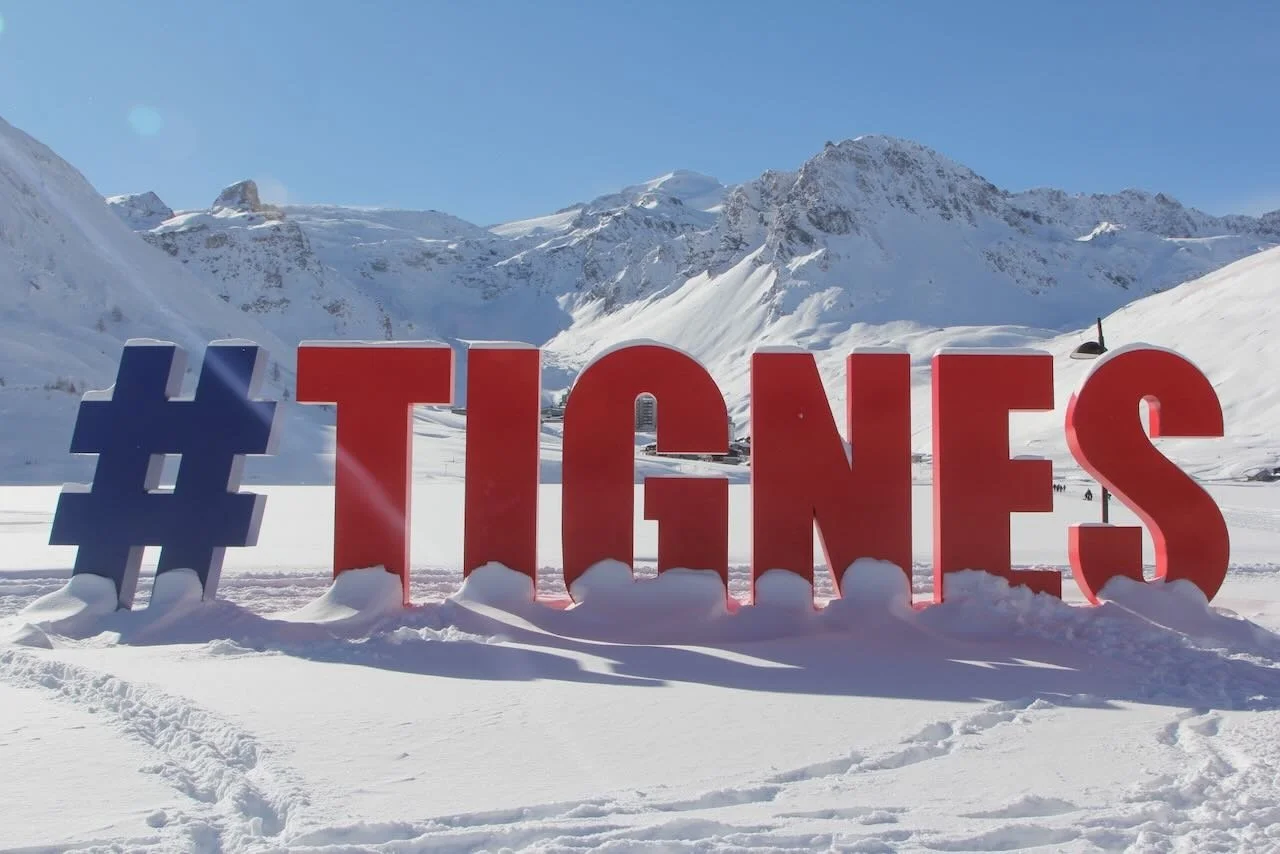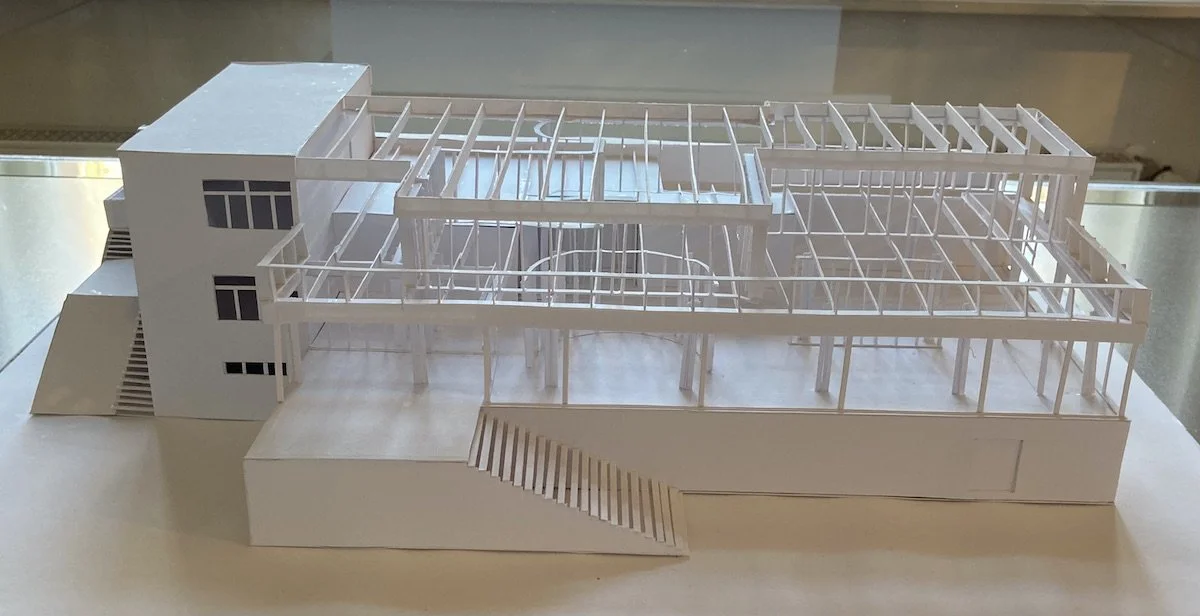Scoop: the Eiffel Tower is going to grow 6 metres
In March the Eiffel Tower is going to grow six metres, rising to 333 metres from ground to top of antenna from its current 324. All thanks to its new antenna which will be put into place by helicopter sometime in March. So if you see the numbers 330 on the Eiffel Tower in the next few weeks, that’s what they are referring to!
I discovered this whilst clambering around the Eiffel Tower in the middle of the night last night, as one does, chatting with the people who light the monument and with the Eiffel Tower’s project manager. They were talking about where best to place the numbers three so out of polite curiosity I asked why they wanted to put threes on the tower and they replied “because it’s growing!” And then they explained.
The reason I was up there was because I’d been invited up by Jérôme Chupin, the managing director of Magnum, the company that has been lighting the Eiffel Tower for special occasions for more than 25 years, as I wanted to find out how the Eiffel Tower is lit and who decides what themes will be used. He suggested I come and watch the EU stars being taken down. These giant stars, each measuring 5m25 from tip to tip, were put up on 1st January against a blue light (that also bathed every other major monument or building in Paris) to mark France taking over the six-month revolving presidency of the European Union.
Unfortunately for me, the Magnum teams had worked fast and all the stars had already come down the previous evening but Jérôme had kindly asked that they keep one on the ground for me so that I could appreciate just how big they are. He also showed me some hair-raising photos of his acrobatic team taking down the stars placed, as on a clock face at 10, 11, 12, 1 and 2, “because the crane is not high enough to reach those stars”.
The Eiffel Tower closes to the public every evening at 23:00 (except for diners at the Jules Verne restaurant who can stay until midnight). But if you think it then slumbers all night, think again! It becomes an absolute bee-hive of activity because that’s when the lighting people do their thing, the painters do theirs (its currently being entirely repainted in time for the Olympic Games in 2024) and so on.
Duly equipped with security shoes, a high-vis vest and a hard-hat we rattled up to the second floor in the service lift and then sped up to the top in a much smoother one. And then we went up a small stair-case reserved for technicians and emerged just under the antenna. I was glad I’d worn my ski trousers and jacket because although it wasn’t particularly windy on the ground, there was a biting wind up here where the four powerful computer-controlled, motorised, naval projectors are situated. Given the right weather conditions, their beams can be seen up to 80 kms away. Each one rotates 90º in a synchronised fashion creating a cross that swivels 360º. Each projector uses a 6,000W xenon light bulb like the ones commonly used in car headlights.
We then went down and stopped at an intermediary level between the third floor and the second where the public never goes. That’s where Magnum sets up many of its banks of projectors that create the incredible lighting effects on the tower. The gentlemen in the photo at the top of this article were busy removing the ones that give the blue light. I wondered whether any of these highly-skilled technicians ever suffer from fear of heights. Jérôme laughed. “Not these days because they are all thoroughly trained!” And one supposes that those who are subject to acrophobia don’t work on the Eiffel Tower.
There are two distinct lighting systems for the Eiffel Tower: the basic lighting and the special events lighting. Magnum is only responsible for the latter.
The basic lighting
The basic orangey/yellow lighting is provided by 336 high pressure sodium lights which turn on automatically at nightfall thanks to sensors. Designed by Pierre Bideau to illuminate the Eiffel Tower from bottom to top, the system was inaugurated on Dec. 31, 1985 to replace the 1,290 projectors in place since 1958. The 1985 projectors were modernised in 2004 reducing the electricity consumed by each projector from 1,000 Watts per hour to 600 Watts per hour.
The flashing lights, which sparkle for five minutes on the hour, are considered part of the basic lighting. The lighting is generally switched off at 01:00 (except when people are working) but then the sparkly lights have their own show for five minutes. And if you’re concerned about how much energy the flashing lights consume, don’t worry. The 20,000 light bulbs are only 6W each and light up randomly, each light bulb being independent from the others.
The special events lighting
The special events lighting is the work of Magnum. “We’ve done at least 50 different illuminations of the Eiffel Tower over the past 25 years,” Jêrôme told me, adding that “projectors have changed so much that it’s become easier for us and cheaper for our clients.” The EU flag had already decorated the Eiffel Tower in 2008 when France last held the EU presidency. “Fourteen years ago it was much more complicated and three times more expensive,” he remarked “because back then our projectors were not waterproof so it was really complicated to find the right kind of glass to protect them. Today we have LED projectors that are waterproof: makes things much easier!” Technological progress means special lighting in 2008 used 800kW per hour whereas in 2022 it is down tenfold to 80kW per hour.
Who decides?
Who decides what special lighting effects are needed? And who pays? Well, the answer to both is either the STE, the company that manages the Eiffel Tower, or Paris City Hall (Mairie de Paris) which owns the monument, or the State. “We normally begin discussions for a project about two months beforehand but for really big projects, such as the Rugby World Cup in 2023 or the Paris Olympic Games in 2024 we’re already discussing various ideas,” he said.
But once he only had 48 hours to put something together. “It was after the Bataclan terrorist attack on Friday Nov. 13, 2015 just before midnight. The next day I got a call from the Mairie de Paris asking if we could light the Eiffel Tower with the French flag by Monday evening in time for the main news broadcasts. I said ‘no’. But they called again on Sunday so I said we’d do what we could and by 05:00 on Monday I had my teams of climbers and electricians ready. The red lights up to the first floor and the blue lights from the third floor to the summit were LED but the white in the central part was produced by HMI (hydrargyrum Medium-Arc Iodide – a type of light which uses an arc lamp instead of an incandescent bulb) projectors that we set up on the roof of the restaurant. It was lit for the evening news.”
Differing interpretations
Jérôme concedes that he doesn’t like some of the illuminations, or “shows” as he calls them, he’s been asked to do but says there was only one time when an effect he really liked was misinterpreted. It was for the Bastille Day 2013 celebrations during which France was celebrating South Africa “the Rainbow Nation”. “The fireworks artistic director asked me for a rainbow colour effect and was really pleased with the result, as was I, but the next day Le Parisien (a widely-read daily) claimed the effect was because the openly gay mayor of Paris had had the Eiffel Tower lit with the LGBT colours! That idea hadn’t crossed my mind for an instant,” he laughs.
This is a highly modified version of an article that I wrote for a tour company, Experience First, that does special walking tours of the Eiffel Tower. You can read the original article here. The first eight photos of the Eiffel Tower dressed in different coloured lights are not mine. The others are.

















